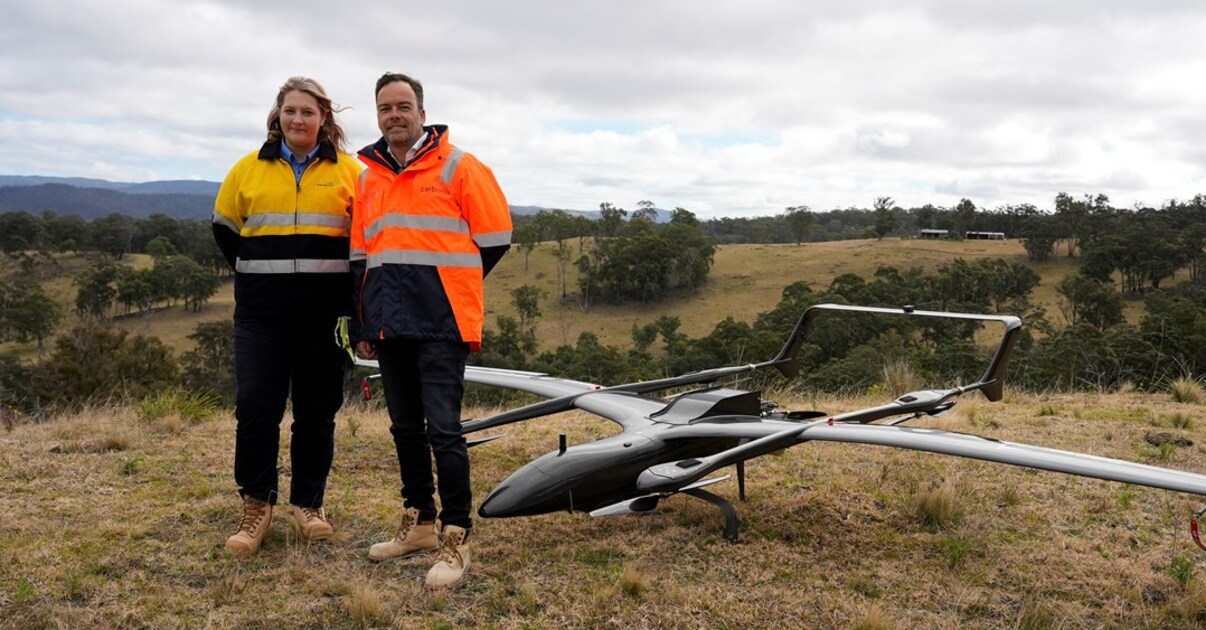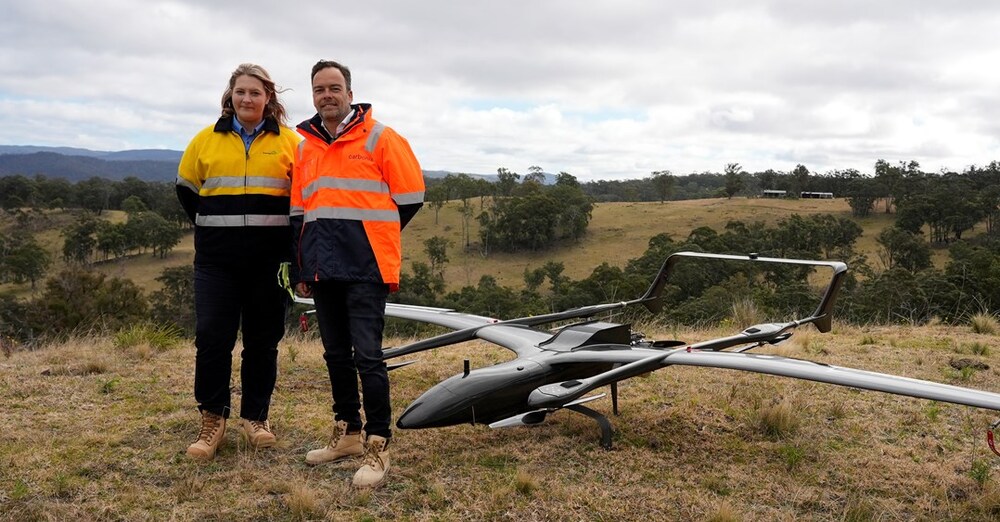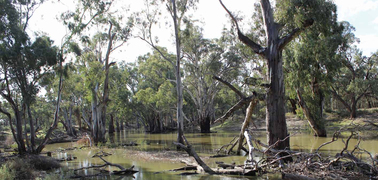Transgrid trials drones for bushfire preparation
Krista Schade
08 October 2024, 4:00 AM


Transgrid executive general manager of delivery Jennifer Hughes and Carbonix CEO Philip van der Berg. Image: Transgrid.
Transgrid has launched an innovative trial of advanced drone technology to inspect its high-voltage transmission network in NSW and the ACT to help keep local communities safe from bushfires.
“We take preparation for bushfire season very seriously and the safety of our people, landowners and communities is our first priority," Executive General Manager of Delivery Jennifer Hughes said.
“We are trialling the use of cutting-edge drone technology to conduct 3D-laser surveys of our network using LiDAR* technology to detect vegetation growing in the vicinity of the transmission easement and enable us to undertake timely vegetation management.
“Transgrid embraces innovation to continually improve how we manage the network and drive efficiency in delivering access to affordable, safe and reliable energy to more than three million homes and businesses in NSW and the ACT.”
As part of its annual bushfire prevention program, Transgrid uses conventional crewed aircraft (helicopters or light planes) to carry out LiDAR surveys to detect vegetation encroachments across its 13,000km network – the equivalent distance of travelling from Sydney to Perth four times.
Australia’s largest transmission business has now engaged Sydney-based, fixed-wing drone manufacturer Carbonix to trial the use of its long-range, hybrid powered un-crewed aerial vehicles. These vehicles are CASA approved units and are operated by licensed pilots.
The Carbonix Ottano drone, which is capable of flying 500km in a single mission, has already been tested in the Megalong Valley in the Blue Mountains.
The fixed-wing vertical take-off and landing drone captured data insights and high-quality imagery of transmission lines at a speed of approximately 90km/h and an altitude of below 400ft making it a safer and significantly more cost-effective alternative to traditional methods.
Ms Hughes said specialist drones have the potential to drive even greater efficiency in Transgrid’s comprehensive asset management program and provide genuine safety benefits for personnel and communities.
“Compared to conventional crewed aircraft, drones would provide significant operational and environmental benefits, reducing costs and carbon footprint while improving safety and efficiency,” Ms Hughes said.
“In fact, drones could reduce the need to conduct 185 hours of LiDAR inspections using a crewed aircraft, resulting in a reduction of more than 12 tonnes of CO2 emissions.
“Drones are also more easily deployed than conventional aircraft, potentially accelerating asset inspection cycles, and ensuring early bushfire risk identification and mitigation.”
The trial is also assessing the potential for drone technology to lower noise and disturbance for landowners, livestock and wildlife.
Carbonix CEO Philip van der Burg said the company was proud to support Transgrid in the initiative.
“The Ottano’s ability to cover vast distances and capture high-quality imagery at speed and lower altitude ensures thorough inspections without the logistical challenges and environmental impact of traditional crewed aircraft,” he said.
“This trial represents a significant step forward in modernising asset management and demonstrates the tangible benefits of drone technology in real-world applications.
“It not only enhances operational efficiency but also aligns with our shared goal of reducing carbon footprints and promoting sustainable practices. Together, we are setting new standards for safety, reliability, and environmental stewardship in the energy sector.”
Trials with the Carbonix Ottano 6.5m carbon-fibre drone, including Beyond Visual Line of Sight missions, will continue this year.
Transgrid plans to progressively introduce specialist drones to conduct annual LiDAR surveys of the network from 2025.
*LiDAR, an acronym for "light detection and ranging", helps build a 3D-model of transmission lines by targeting objects with a laser beam and measuring the time for the reflected light to return to the receiver.

